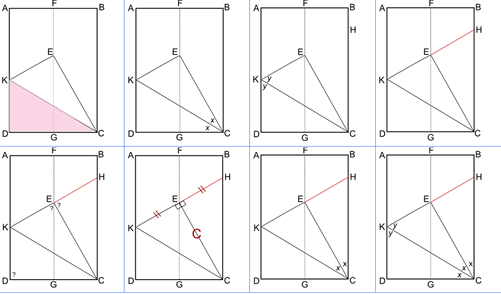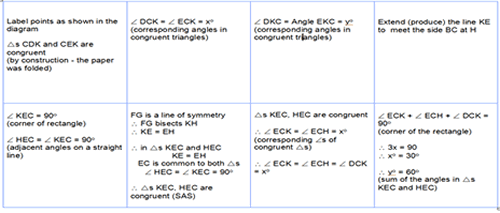Or search by topic
Number and algebra
Geometry and measure
Probability and statistics
Working mathematically
Advanced mathematics
For younger learners
Making Sixty



- Problem
- Getting Started
- Student Solutions
- Teachers' Resources
Why do this problem
This problem involves a simple construction which gives a surprising and useful result. Having confirmed the sizes of angles this knowledge can be applied to make images and polyhedra. Different routes to solution can also lead to useful discussions, including how well learners explain their reasoning and the elegance of their methods.
Possible approach


Key questions
What do you know?
Possible support
Spending time making triangles and feeling confident about their properties is a useful starting point. Finding triangles that might be congruent, cutting them out and testing the congruency by matching them can then lead to identifying why sides and angles might be equal.
Possible extension
See:
Paper Folding - Models of the Platonic Solids.
Can learners justify all the results used as they work?
You may also like
A Problem of Time
Consider a watch face which has identical hands and identical marks for the hours. It is opposite to a mirror. When is the time as read direct and in the mirror exactly the same between 6 and 7?
Quad in Quad
Join the midpoints of a quadrilateral to get a new quadrilateral. What is special about it?
Arrowhead
The points P, Q, R and S are the midpoints of the edges of a non-convex quadrilateral.What do you notice about the quadrilateral PQRS and its area?

